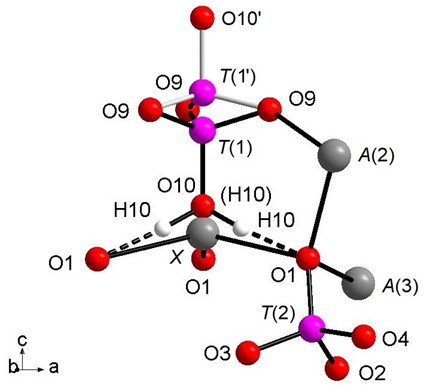Learning from meteorites to improve bone replacements
The first full and accurate characterisation of the mineral whitlockite has been carried out using neutron diffraction at ISIS, X-ray diffraction, electron microprobe analysis, and infrared spectroscopy.
Whitlockite, which has the ideal formula Ca9Mg(PO4)6[PO3(OH)], is a rare natural calcium phosphate found in granite rocks. It is retrieved also in chondritic meteorites, along with its de-hydrogenated analogue, the mineral merrillite (the most important reservoir of phosphate phosphorous in the Solar System), making it a natural phase largely studied in planetary science.
However, it’s not just space scientists that find whitlockite interesting; this mineral, is the natural counterpart of the synthetic biomaterial tricalcium phosphate (TCP), chemically Ca3(PO4)2, largely employed in dentistry and orthopaedics such as cements, scaffolds and coatings.
By studying the structure of these natural materials, scientists can improve the synthetic versions to better adapt to the expected function in medical applications. In particular, TCP is an alternative to the synthetic hydroxyapatite Ca5(PO4)3OH, which is very similar to the mineral part of human teeth and bones, but is too brittle to be used for some biomedical applications, on all within prosthetic implants.
Any synthetic implants are also at risk from rejection from the body. The information gathered by studing the natural material can be used to modify the synthetic materials in order to reduce both brittleness and rejection rates, therefore improving their overall performance.
When whitlockite was originally characterised in 1972, the technical equipment was not of high enough standard to get extremely accurate data. This study, published in Crystals, is the first to measure the structure with higher accuracy, using the unique capability of neutron diffraction to locate the hydrogen atoms within the mineral.
A sample of the mineral from the Palermo mine in the USA was sent to the SXD instrument at ISIS, after preliminary investigations using X-ray diffraction, where it underwent neutron diffraction measurements. These measurements allowed the completion of the structural investigation by establishing the hydrogen bonding network within the mineral. The sample was also studied by electron microprobe analysis to confirm the chemical content, and for the first time on this mineral, by infrared spectroscopy to complement the diffraction results.
Further information
The full paper can be found online at DOI: https://www.mdpi.com/2073-4352/11/3/225
And at ISIS Neutron and Muon Source UK : https://www.isis.stfc.ac.uk/Pages/SH21_Meteorites_BoneReplacements.aspx?utm_source=Users&utm_medium=Users%20Email&utm_campaign=User%20Science%20Highlight
Whitlockite structure: view of the (T(1)O3OH) group split along c axis; details of O10-H10…O1 hydrogen bond; coordination of O1 atom.

